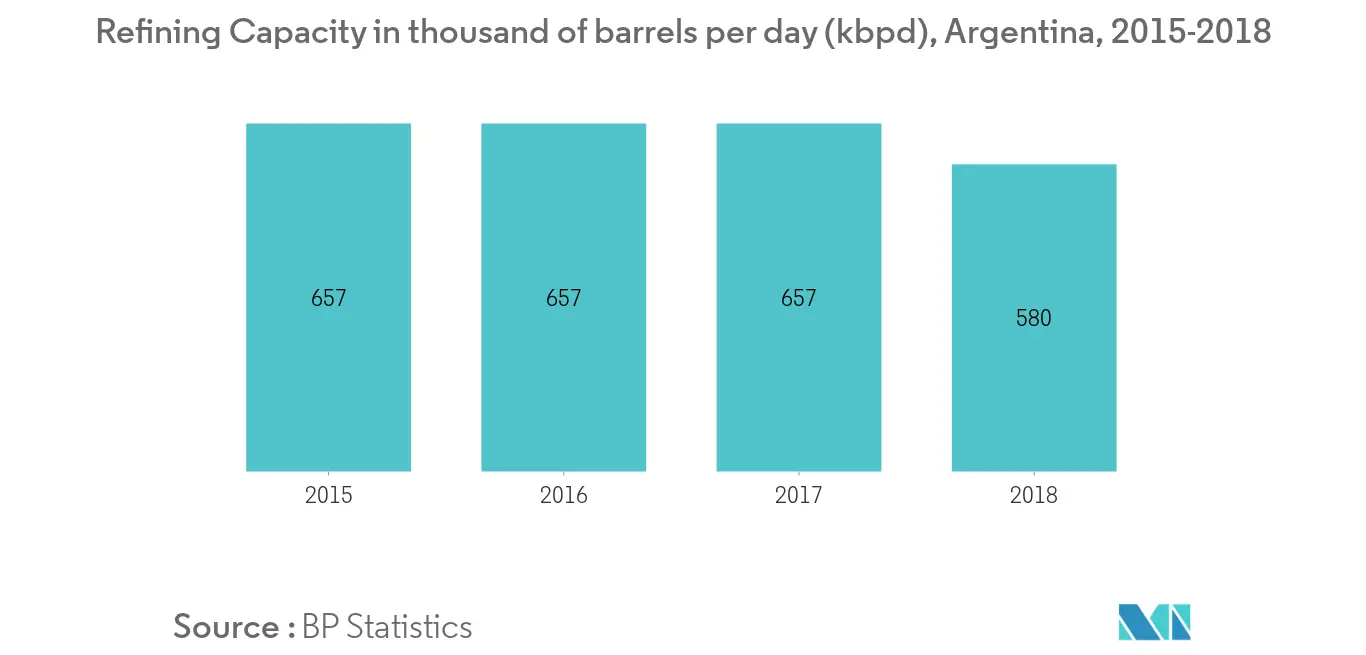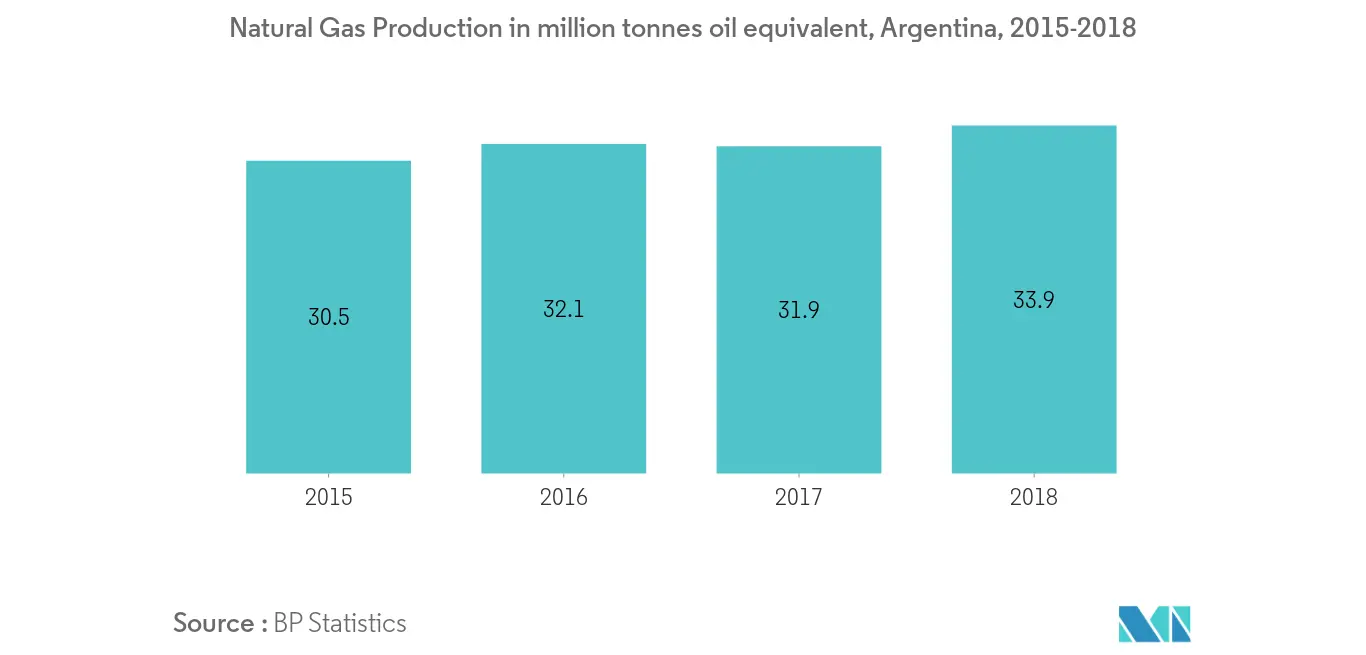Market Trends of Argentina Oil and Gas Downstream Industry
This section covers the major market trends shaping the Argentina Oil & Gas Downstream Market according to our research experts:
Oil Refining Capacity to Witness Moderate Growth
- In Argentina, the capacity of refineries had decreased from 657 Thousand barrels daily (kb/d) in 2015 to 580 kb/d in 2018. The refinery throughput decreased by 5.9% from 500 kb/d in 2017 to 470 kb/d, in 2018.
- Campana Refinery, operated by Pan American Energy is, in 2019, under expansion. It has a production capacity of 4.5 million cubic meters per year of petroleum products. It is expected to increase the production capacity of fuels by 60% and further improve its quality by reducing its sulfur contents.
- In 2019, Yacimientos Petrolíferos Fiscales SA was considering a proposal to increase the refining capacity of its refinery in La Plata. La Plata is the largest refinery in the country, with a capacity of 189,000 barrels per day.
- Oil consumption reduced 6% from 32 million tons of oil equivalent (Mtoe) in 2017 to 30.1 Mtoe in 2018. The decline in use can be attributed to the economic slowdown in the country.
- Argentina's oil and gas downstream industry is expected to grow slightly over the forecast period due to an increase in oil production in the country.

Increasing Demand of Natural Gas to Drive the Market
- Natural gas imported by Argentina decreased by 10.45%, year on year, from 5.6 million tons oil equivalent (Mtoe), in 2015 to 3.6 Mtoe in 2018, owing to the increasing gas production in the country.
- Natural Gas Production in the country has increased substantially, by 6.1%, rising to 33.9 Mtoe in 2018 from 31.9 Mtoe, in 2017. The increase in production is due to the rise in shale gas production from Vaca Muerta.
- Vaca Muerta, a giant shale play, is leading a recovery in the country's oil and gas production. It has changed the scenario in the refinery business by increasing the refinery throughput. Oil production was 518 kb/d (thousands of barrels per day) in August 2019, i.e., 5.5% higher compared to August 2018. In 2019, conventional oil decreased by 3%, whereas unconventional production can be compensated for more than 58% of the decrease in oil.
- Therefore, based on above-mentioned points, increasing consumption of natural gas is expected to drive the oil and gas downstream market in Argentina during the forecast period.


